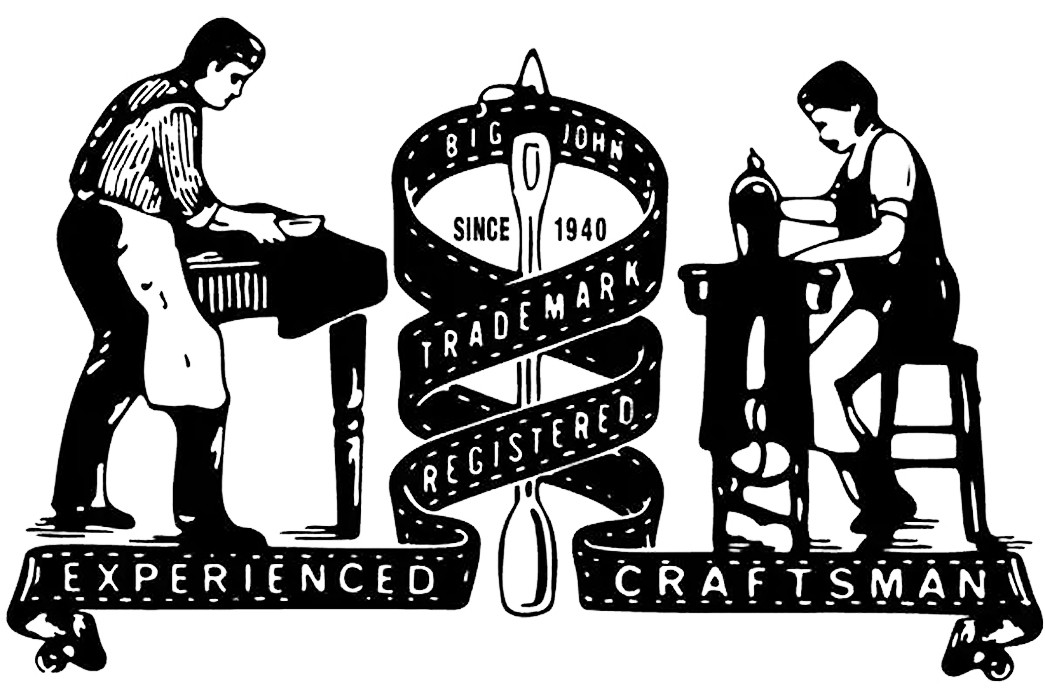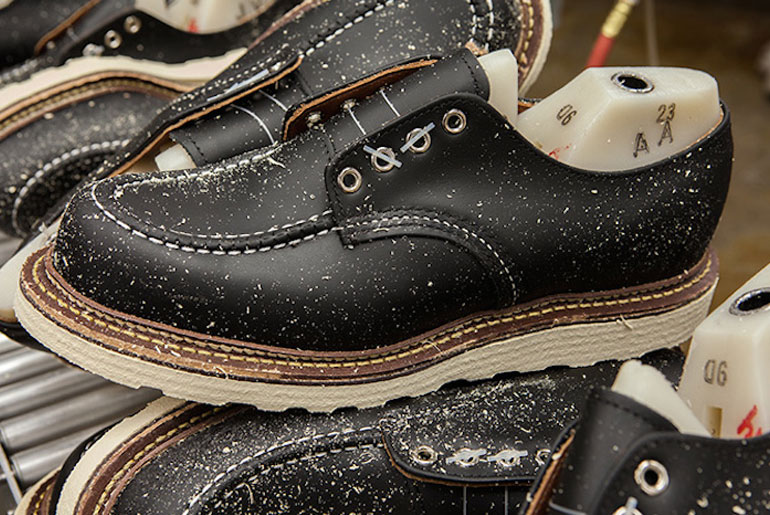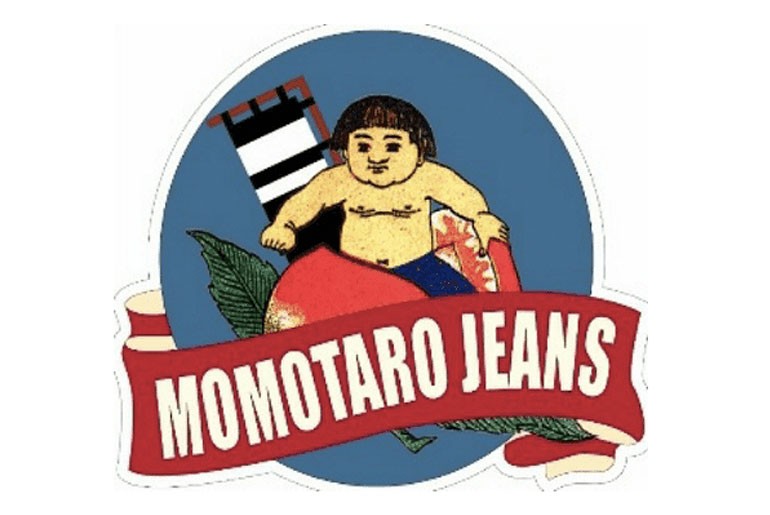- Heddels
- Posts
- June 25 - BIG JOHN – The History of the First Japanese Made Jeans
June 25 - BIG JOHN – The History of the First Japanese Made Jeans
BIG JOHN – The History of the First Japanese Made Jeans
We delve into the history of the world famous brand, BIG JOHN; the first Japanese company to begin producing and selling denim.
Paul Travi

BIG JOHN is the godfather of Japanese denim. Much is said about the Osaka 5, and for good reason — those brands are arguably the proprietors of Japanese denim as we know and love it today. But if it wasn’t for BIG JOHN, there’s no way the Japanese denim story would have unfolded in the way that it did.
Despite its prestige, BIG JOHN is criminally underrated and, until more recently, underepresented by Western stockists. But after rebooting its more historic denim lines some 15 years ago, the brand has started getting the flowers it deserves. Join us as we take a look at the history of BIG JOHN, from its start way back in the 1940s to its presence in the denim world today.
Big John History & Philosophy

The beginning of BIG JOHN takes us back to the 1940s, when founder Kotaro Ozaki started his sewing business, Maruo Clothing, manufacturing students’ uniforms, workwear, and U.S. military-look pants. It wasn’t until the year 1965 that the first domestic jeans were born in Kojima, under the Canton brand name.
A fortunate contract with the Japanese Ministry of International Trade and Industry gave Maruo Clothing the rights to manufacture and sell in a small area in the west of Hakone. They received 50 rolls of denim fabric from Georgia’s now-defunct Canton Textile Mills Inc., and in October of the same year, the first Japanese-made one-wash jeans were sold.

Kotaro Ozaki, M1002 First Model
In 1967, while production of the Canton jeans was ongoing, the first BIG JOHN M1002 Proto Model was produced using imported Cone Mills denim from the US. One year later, the M1002 First Model was released together with the M2002 Boot Cut Model, and the M3002 Slim Model. Thus, the BIG JOHN “first collection” was born.
In 1969, the “ROAD RUNNER” series made its first public appearance. It was the first time that colored jeans were made in Japan. These particular jeans also featured a new model, the M4002. This was a cutting-edge bell-bottom jean that took off and was embraced by trendy youth in Japan.

The First Japanese Denim
Jump ahead to 1972, and the first Japanese denim fabric was produced. Kurabo Mills created the “KD-8.” At that time, Japanese textile mills had never officially produced denim before. It took them 8 tries to get it right, hence the name “KD-8” — Kurabo Denim on the 8th try.
The best was still to come, and in the year 1973, the BIG JOHN signature collection “M” series was released. These were the very first Japan-made jeans manufactured with Kurabo’s new “KD-8” fabric.

In 1975, World Workers, a sub-brand of BIG JOHN, made a debut. This was a Work Pant line that started during Japan’s outdoor activities boom. At the year 1980, BIG JOHN developed Japan’s first uneven yarns, marking the beginning of the vintage, repro denim trend we know and love today.
It was also in the 80s that BIG JOHN reached corporate status, expanding their production system and applying corporate philosophies like “Quality Comes First.” This was the first point at which Big John expanded into the international market, finding stockists rapidly and widely throughout Europe and the U.S.

The 1990s were marked by successful campaigns, like “Jeans Revolution,” using recycled jeans and natural dyes. The “Rare Meister” collection — based on a run of 300 hand-made jeans — was a great success, selling out just after the pre-orders opened. The “Sharp Fit,” a repro collection of bell-bottom and tight straight fits, rounded out a successful decade for BIG JOHN.
At the turn of the century, BIG JOHN was continuing to push boundaries, publicly calling the 2000s the “era of proposing new styles and cutting edge.” They made a license contract with Dickies, developing and selling under the Dickies brand in Japan. They later released the “low-rise jeans” to satisfy the street fashion demands and clamoring. Following that, BIG JOHN released “The Tailored”, a collection of slim-fit focused jeans and the “M3“, a modern version of their popular 60’s slim-fit M3002.

Faded BIG JOHN selvedge denim jeans
Export Hiatus
BIG JOHN brought most of their export business to a halt in the mid-90s. We don’t know the explicit reasons for this, but it was awful timing and undoubetedly stifled the brand’s Western success. Brands like Evisu were flourishing outside of Japan, and BIG JOHN had the resources to follow that success, but on their own path. Alas, they chose to insulate within Japan.
It wasn’t until 2009 at a Japan Expo in Paris that BIG JOHN officially re-opened to the European market. In 2010, BIG JOHBN celebrated its 70th anniversary, and part of the celebration included the release of an archive series, reproducing BIG JOHN’s most classic jeans BIG JOHN ever made.
Big John Today

Big John HQ via Phronimoi
Since somewhat relaunching in 2009, BIG JOHN has continued to produce an astounding body of work around the globe, maintaining high production standards. Headed up by CEO Tsuyoshi Shimizu and head designer Kenichi Kimura, the brand is headquartered in Kojima, Kurashiki City, Okayama Prefecture, and has brick-and-mortar stores in Kurashiki, Tokyo, and Osaka.

The brand describes itself as “…a pioneer of Japanese jeans, as an ‘innovating’ and ‘traditional’ denim brand.”. This philosophy is encompassed by BIG JOHN’s overarching tagline — “it’s your brand”. BIG JOHN honors this by making both traditional selvedge denim jeans and more innovative products that appeal to someone not into esoteric selvedge denim garb.
Speaking of innovation, BIG JOHN recently released its ‘Wild Duck’ denim, woven in Japan using 40% regenerated cotton (6% of which is reed fibers from Lake Kojima), this fabric makes use of fibers that were due to be discarded and instead makes them into yarns for selvedge denim.

Iconic Products
BIG JOHN products are developed along two axes: a 100% cotton line and a ‘super‑stretch’ line called BJMCOMPLETEFREE, which seems to be exclusive to the Japanese market. As the first company in Japan to succeed in mass‑producing jeans, BIG JOHN upholds the “Tradition” of its philosophy through its selvedge denim and other 100% cotton lines, whilst pioneering “Innovation” at the forefront of an evolving jeans industry with its stretch denim endeavours.
We, of course, are interested in the 100% cotton, heritage-inspired goods, which are currently anchored by 2 lines: The flagship “RARE” line, and the Organic cotton “EXTRA” line.
RARE (R008, R009)
BIG JOHN R008 Straight Leg Selvedge Denim Jeans, available f0r $380 from Franklin and Poe.
BIG JOHN R009 Slim Selvedge Denim Jeans, available for $380 at Franklin and Poe.
EXTRA (XX001, XX002)
BIG JOHN XXXX-EXTRA Lot.XX001 Regular Straight Fit Selvedge Denim Jeans, available for $265 from HINOYA.
BIG JOHN XXXX-EXTRA Lot.XX002 Slim Straight Selvedge Denim Jeans, available for $265 from HINOYA.
Like this? Read these:
What did you think of today's newsletter? |




